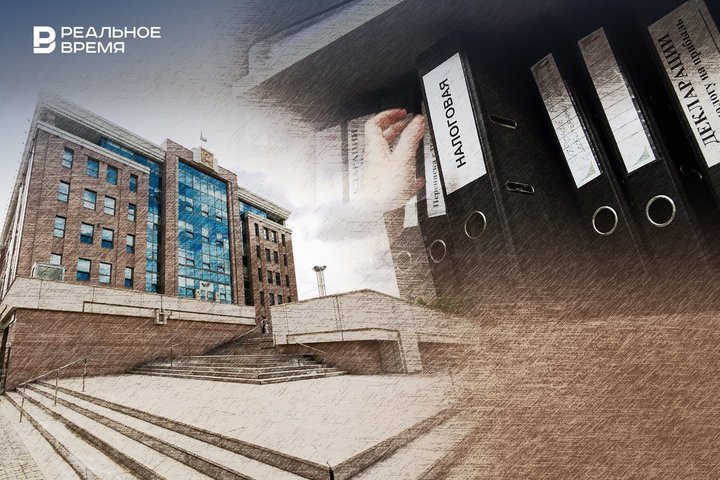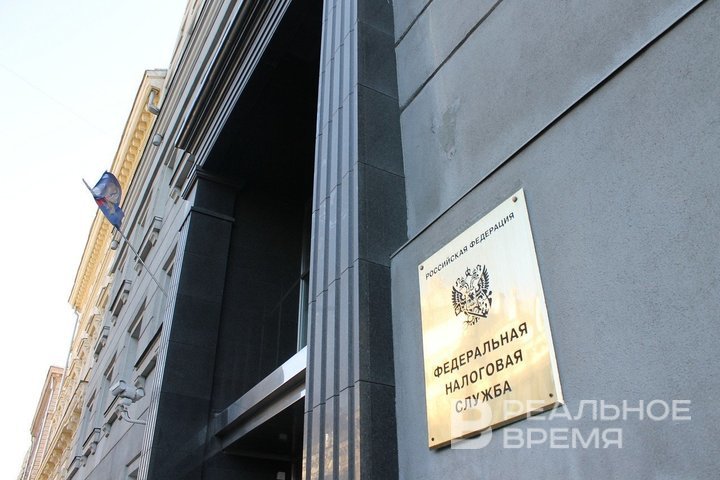How the Federal Tax Service is breaking records in Tatarstan for debt collection from bankrupts
The tax authorities have become twice as rare in bankrupting enterprises in the republic resolving issues peacefully

The Federal Tax Service has broken the record for collecting taxes from bankrupt enterprises in Russia: in 2024, over 252 billion rubles were received into the budget under this item, which is 26.5% higher than previous figures. In 2024, Tatarstan tax authorities initiated bankruptcy of companies twice as rarely as a year earlier. They agreed with many enterprises to pay off arrears without going to court. Read about the achievements of the fiscal authorities, the reasons for the record and its impact on the economy in the report of Realnoe Vremya.
Collected a quarter more than a year ago
According to the report of the Federal Tax Service of Russia, in 2024, fiscal authorities collected 252.1 billion rubles from enterprises undergoing bankruptcy proceedings. This is 26.5% more than a year earlier, when the budget received 199.3 billion from bankrupt companies. At the same time, such an indicator as bankruptcy efficiency, estimated as the amount of receipts per ruble of debt, also increased — from 18.1 to 21%.

These results are especially impressive against the background of the results of 2022, when a moratorium on initiating bankruptcy cases based on creditors' applications was in effect for 6 months — from 1 April to 1 October. Then, only 152.3 billion rubles were received into the budget during the bankruptcy process.
However, according to some experts, 2022 could be considered a record year in this regard: if there were no moratorium, enterprises that went bankrupt during the pandemic could have provided revenues in excess of 300 billion.
At the same time, in 2024, the volume of settlement agreements between debtor enterprises and the Federal Tax Service increased sharply. If from 1 April 2022 to 31 December 2023, they were concluded for 39 million rubles, then from January 1 to December 31, 2024 — for 64.96 billion. The Federal Tax Service gave an instalment plan for paying tax debts from 1 April 2022 to 31 December 2023 for 159 million rubles, and from 1 January to 31 December 2024 — for 280.24 billion.
The tax service began to bankrupt twice as often
As Realnoe Vremya found out, last year the tax authorities declared the republic's enterprises bankrupt half as much as the year before. In 2023, the Federal Tax Service for the Republic of Tatarstan initiated 619 bankruptcy cases, and in 2024 — 385, according to SPARK-Interfax data. In almost four months of 2025, the administration filed all 11 applications, all dated April. Among them are claims for bankruptcy of Tatflot, Novostroy, Almaz-Holding, NChKZ and others. For example, the amount of tax claims against the shipping company now amounts to 192.3 million rubles.
Earlier, the tax service itself told journalists that they consider the main reason for the increase in revenues to be an increase in the efficiency of their debt collection activities.
Victims of panic
Realnoe Vremya expert, lawyer, specialist in tax disputes and debt collection Mikhail Karpov believes that the growth in the volume of tax collections from bankrupt companies in 2024 speaks of the “quality” of these enterprises:
“If earlier companies went bankrupt at the last moment, when they no longer had assets, today they comply with the requirement of the law to file for bankruptcy if they have financial obligations that have not been fulfilled for three months and there are insufficient fixed assets to cover these debts. To avoid bringing the company's director to subsidiary liability, companies submit such information to Fedresurs. This is seen by their counterparties, including the tax inspectorate, and they file for bankruptcy at an earlier stage. Thus, even viable companies that have temporary difficulties are subject to bankruptcy. And since the tax inspectorate is second in line on the list of creditors, after the employees who need to be paid their salaries, it takes its money.”
In his opinion, the “accumulation effect” of cases after the moratorium on bankruptcy after the period of COVID self-isolation also had an effect, when a number of enterprises had their long-overdue final postponed for objective reasons.
In addition, Karpov noted, the tax inspectorate began to conduct inspections more often, and based on the results of these inspections, file for bankruptcy of companies. And even if the debtor could agree with creditors on a deferment of debt repayment, the bankruptcy mechanism is launched. At the same time, quite viable enterprises can “drown,” since, having learned about the threat of bankruptcy, creditors in a panic begin to actively demand repayment of debts.
The expert is not inclined to consider the success of the Federal Tax Service in collecting taxes from bankrupt enterprises a good sign, since this is not only a consequence of the intensification of its work, but also evidence of problems in the economy and the associated increasing the number of operating companies that meet the criteria established by the Federal Law On Insolvency (Bankruptcy).
“A new surge should be expected in the second half of the year”
Viktor Timokhin, a tax expert and director of Audex, believes that the growth of tax collections from bankrupt enterprises in itself is not an indicator by which one can judge the economic situation or draw conclusions about the growth in the number of enterprise bankruptcies:

Timokhin believes that much depends on the specific taxpayer and the amount of their debt. And he suggested that in 2024, the administrative resource of the Federal Tax Service could have worked, as a result of which the process has intensified and today there are fewer organizations on the verge of bankruptcy in the republic. But this does not mean that the whole year will be so prosperous:
“I think that in the second half of the year, when it becomes clear how the tax collection plan is being fulfilled, tax arrears will be monitored, a new surge in bankruptcies may occur.”